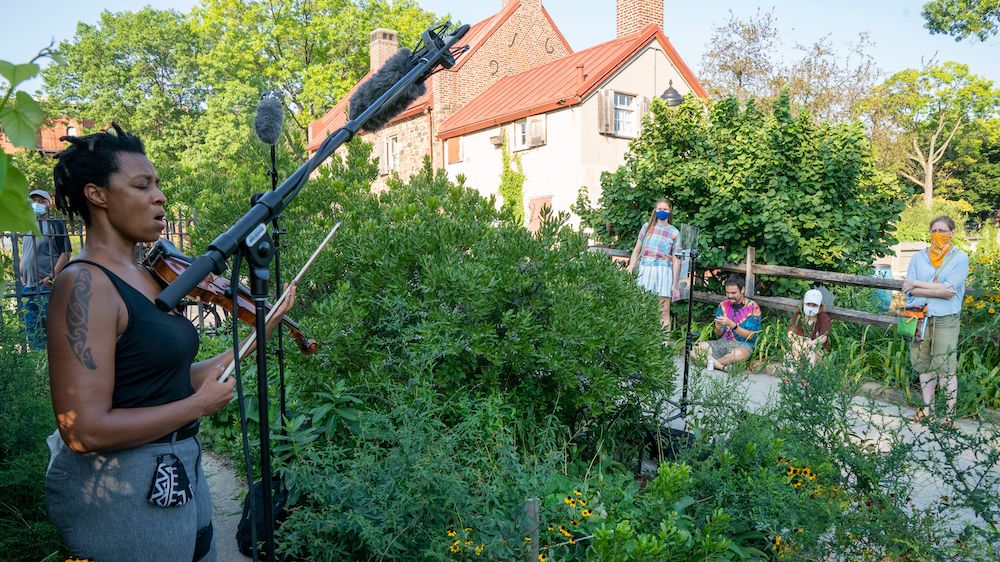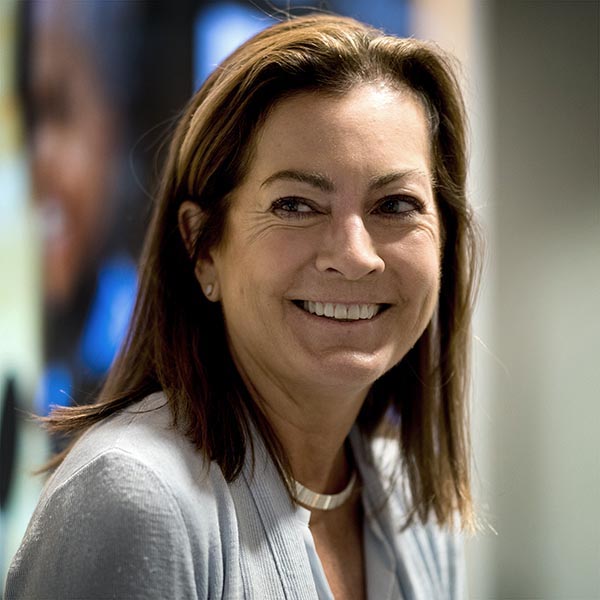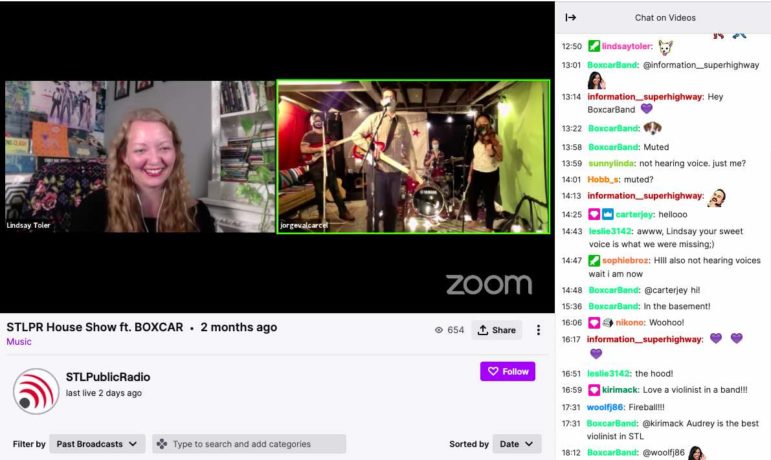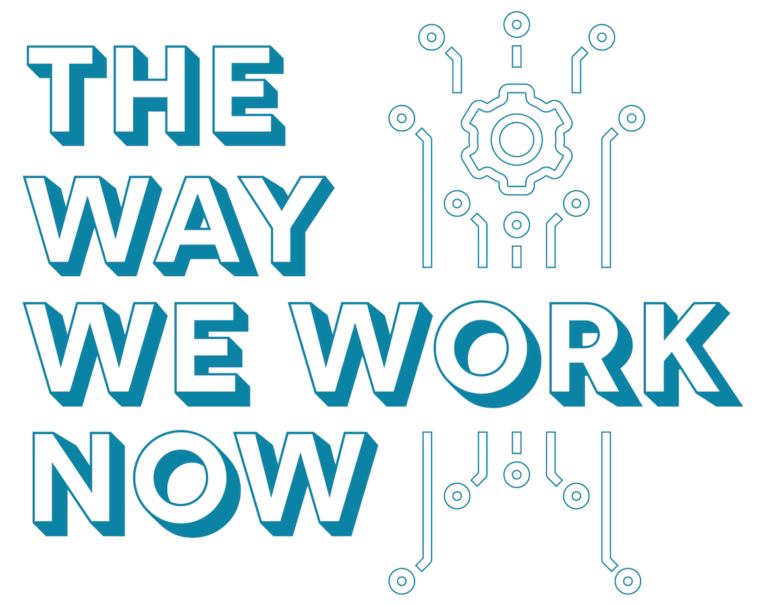With venues closed, event planners create virtual experiences to connect with audiences

Richard Termine / Courtesy NYPR
Violinist Mazz Swift performs at the Old Stone House in Brooklyn during the Mostly Mozart Festival.
Since the pandemic quashed in-person gatherings, public media’s event and engagement producers have been experimenting with digital events, trying out new platforms and testing different types of programming.
In the process they’ve discovered new ways to engage audiences with events that focus on urgent and timely topics. They’ve tested new formats on Twitch, created summer enrichment programs for school-aged kids and designed events tailored to members’ interests.
Public media’s event spaces may have been mostly sitting empty, but event producers say they’ve developed strategies that they will continue — and continue to refine — even after they can bring people together again.
“We will never go back to a world where we focus almost all of our energy just on the intimate in-person audience that we can serve in the studio,” said Jennifer Keeney Sendrow, EP of New York Public Radio’s The Greene Space.
Virtual space to ‘grapple with the issues’
Early on in the pandemic, WBUR in Boston noticed that many organizations were hosting virtual panel discussions or interviews, but not town hall–style events. So the station created a 14-part town hall series about topics related to COVID. WBUR journalists spoke with experts about such topics as education, racial disparities and the surge of COVID-19 infections in the city. The events were free, and the format provided space for attendees to ask questions directly to the experts.

“We wanted to provide a place for people to gather, grapple with the issues that were unfolding in their lives and provide a deeper sense of understanding about everything that was going on in the world,” WBUR CEO Margaret Low said.
Before the pandemic, WBUR held in-person events at its CitySpace venue, a 8,700–square-foot space with a 270-person capacity that opened in February 2019. WBUR had been considering launching an events-based membership before the venue was forced to close, according to Amy Macdonald, CitySpace director.
Since last March, her staff has created virtual formats for events that are likely to continue when the doors open again.
For CitySpace Summer Camp, a free series targeted to families with children ages 5 to 12, “camp counselors” from local organizations helped create enrichment activities around the arts. Counselors developed weekly assignments for the kids around six themes, from theater to creative writing. Participants sent photos or videos of their completed assignments to the station. CitySpace compiled a montage video of the submissions each week.
Circle Round, WBUR’s podcast for children, helped promote the camp. The series drew more than a thousand registrants, and the station received a “significant” number of submissions from national and international attendees, Macdonald said.

WBUR also launched CitySpace Productions, a new business unit specializing in event production services.
After WBUR presented its annual gala as a virtual event last May, other organizations “wanted to understand what we’d done and how we did it,” Macdonald said. So WBUR created the unit to help other groups plan and produce their digital events. CitySpace Productions has worked with five organizations and has five more in the pipeline, she said. The company charges a minimum of $12,000 for the service, according to its website.
The CitySpace venue already had the technical capability to stream events but didn’t produce them regularly before the pandemic. Now Macdonald predicts a hybrid approach of in-person and virtual to take hold when its doors finally reopen.
“Now we know, having had this experience, the flexibility it gives us, the larger audience to reach outside Boston, that going forward, even post-COVID … everything will be a hybrid,” she said. “We will always have streaming, and virtual will be part of our events going forward.”
Testing Twitch
In the first two months of 2020, St. Louis Public Radio had just begun experimenting with hybrid in-person and digital events, including a livestream of an in-person event for its podcast We Live Here.
“We had, of course, no idea … what was coming,” said Leslie Davis, the station’s special events director.
The station continued experimenting even as the pandemic forced events online and eventually decided to create two shows for the livestreaming platform Twitch.
Lindsay Toler, the station’s engagement producer, came up with the idea and hosts both shows. In Too Much News, Toler discusses news stories of the day with St. Louis Public Radio journalists and engages with Twitch viewers who post in the chat. House Show features live music by local artists performing from different locations, including their homes.

“We definitely are attracting a younger demographic, people who are interested in live music and are comfortable with the platform,” Davis said. The audience for Too Much News, which typically attracts a few dozen participants, is more of a mix but “definitely skews younger than what we would get in the room for a live event,” she said. House Show has been more popular, drawing more than 600 viewers for one episode.
Twitch doesn’t require viewers to set up accounts to join an event, which is an advantage for attracting new audiences. With its display of a continuous chat box next to the video stream, Twitch is also “a slightly more interesting platform than just a Zoom screen,” Davis said. Producers use Zoom to record the video and livestream it through Twitch.
Davis is also working to adapt events that St. Louis Public Radio used to hold in-person. This summer, Best of Shorts, an annual screening of short films, will be streamed on the platform.
Davis prefers to use Zoom by itself for events that are targeted to a specific audience or for which the station wants to have more control of the chat moderation. It’s also the preferred platform for ticketed events.
The strategy for digital events has paid off “when we stick to the things we already excel at,” Davis said.
For example, the station’s Mini Journalism School has been adapted from an in-person to a virtual event. The multiweek series, now presented on Zoom, features lectures and discussions of journalism topics like media literacy and investigative journalism.
“We don’t want to do virtual events just for the sake of doing virtual events,” Davis said. “We want to make sure that our events are still connecting to our content and our mission.”
Virtual platforms also provide the flexibility to offer events year-round, Davis said. As St. Louis residents hunkered down in February for a big snowstorm, she didn’t have to think about canceling or postponing one of the Mini J School sessions that was scheduled.
“I no longer have to avoid planning an event in January because I’m concerned about weather,” Davis said. “I just have to plan for it to be accessible virtually, so that if for some reason weather is an issue, we’ve already planned for this … and everyone can participate virtually.”
When live in-person events are once again possible, Davis sees hybrid in-person and digital productions as the norm.
“The conversation you have in-person is, of course, something that we don’t want to lose,” Davis said. “But if we can make our events more accessible to people because we’re offering them in more ways, then I think that’s just a great benefit that will come out of this.”
St. Louis Public Radio also presents events at Public Media Commons, an outdoor event space operated by Nine PBS, the St. Louis public TV station formerly branded as Nine Network. Davis hopes to be able to produce events there “in the late summer or early fall.” But at this time, “we’re not yet comfortable making those plans,” she said.
Birding’s ‘big impact’ with members
GBH in Boston found success with a digital event it might have never tried in-person.
Two years ago, Yuri Stern, director of member engagement and head of the events team, saw membership survey data showing strong interest in birding among the station’s donors.
GBH was “never going to do a birding event in our studio,” Stern said. “It was never going to be practical. It was never going to make sense to do it.”
But when GBH closed its public spaces during the pandemic and began experimenting with virtual events, Stern decided to give it a try.
The team created a digital event with birding author David Allen Sibley and Arun Rath, executive editor and host of GBH’s All Things Considered. “Next thing you know, we have 1,500 registrants and over 1,000 attendees logging in on a noon on a Friday in the summer to talk about birding.”
“It had a big impact,” Stern said. “We brought in a lot of new people, and yet it was really simple and it was also data-driven.”
Ticketed membership-focused events such as a conversation with travel show host Rick Steves have also been well received, Stern said. The station sold a limited number of tickets to the event, which featured a conversation between GBH Radio’s Celtic music host Brian O’Donovan and Steves, and invited participants to ask questions.
Attendees could also join a digital meet-and-greet to do a virtual photo-op with Steves, whose shows are popular with public TV members. Events that pair a virtual program with a meet-and-greet with well-known talents have been “really popular,” Stern said.
GBH treats membership-oriented events “a little bit like pledge,” with a fundraising pitch in the middle and at the end. Attendees also receive post-event emails or texts, and the follow-ups have converted some to sustaining members. “We’re really pleased with the results,” he said.
He thinks the approach has long-term value for cultivating members, but it’s too early to know how well virtual events work compared to on-air pledge or acquisition mail.
“My instincts tell me, yes, that they probably are more valuable because they’re coming in and engaging with us right off the bat,” Stern said.
For virtual events addressing the community’s response to the pandemic and the movement for racial justice, GBH partnered with the Boston Globe, the NAACP’s Boston chapter and World Channel to present “The State of Race,” a series of virtual forums that began last summer.
The first event was a panel discussion on how the pandemic has exacerbated inequalities in the Black community. The series, which also explored police reform and inequities in housing, has been “some of our most successful events as far as community engagement,” Stern said. “We’re bringing thousands of registrants and attendees to these really important discussions.”
During the pandemic, GBH has found it has more flexibility to offer events on weekday afternoons, Stern said.
“Where our station is located and the demands on the space during the business day and parking and things like that — afternoon events are kind of tricky,” Stern said. But with virtual events, there’s an audience during times that wouldn’t have worked to physically gather.
‘People really value the liveness’
Early in the pandemic, NYPR’s events team at The Greene Space decided to post digital events five days a week by drawing on an archive of in-person events that had been previously recorded. After repackaging more than 60 events, Sendrow said it was time to try to reevaluate.
“We learned pretty quickly that it takes a lot of effort even to pull that stuff out of the archives,” she said. “And so we did decide … to just focus on making new things and … just lean forward and keep responding to the moment that we’re in.”
Since March 2020 the team has produced about 100 digital events, including some that had been planned as in-person and transitioned to digital.
“We really went all-in and did just as much as we would have done if we were still working in person,” Sendrow said.
Its events have ranged from First Peoples Week, NYPR’s first-ever festival featuring Native creators and artists, to a book club series called Get Lit led by Alison Stewart, host of WNYC’s All of It.
“What we learned is that people really value the liveness and really do engage in real time,” she said. Most of the virtual events have been free, but they’ve attracted online donations and attendees from around the world.
The team has utilized physical spaces for some digital events, including musical performances. For instance, New York Public Radio’s WQXR partnered with the Lincoln Center to present their annual Mostly Mozart Festival last summer. It featured local artists performing live in public parks in each of the five boroughs. “We took advantage of the fact that we could use all our skills and ability … to do these field experiences that we would never do when we could use our studio,” Sendrow said.
In December, NYPR’s team began producing some events inside The Greene Space, where musicians performed without an in-person audience.
“There’s no replacing that feeling of being in the room when something happens,” Sendrow said. “But I think that we’ve found a lot is still possible and that we are still able to connect with one another as people, as artists, as thinkers. That’s been a challenge, but one that’s been rewarding to me.”
After nearly a year of digital events, Sendrow has found that “we’re very conscious now of the power of this video platform. And that wasn’t something that was native, being a radio station primarily.”
The team has learned that digital events “can be a way to reach entirely different audiences than we reach” on other platforms, Sendrow said. “… There’s just a lot of power in being able to invite people who aren’t physically able to join us into these experiences.”






